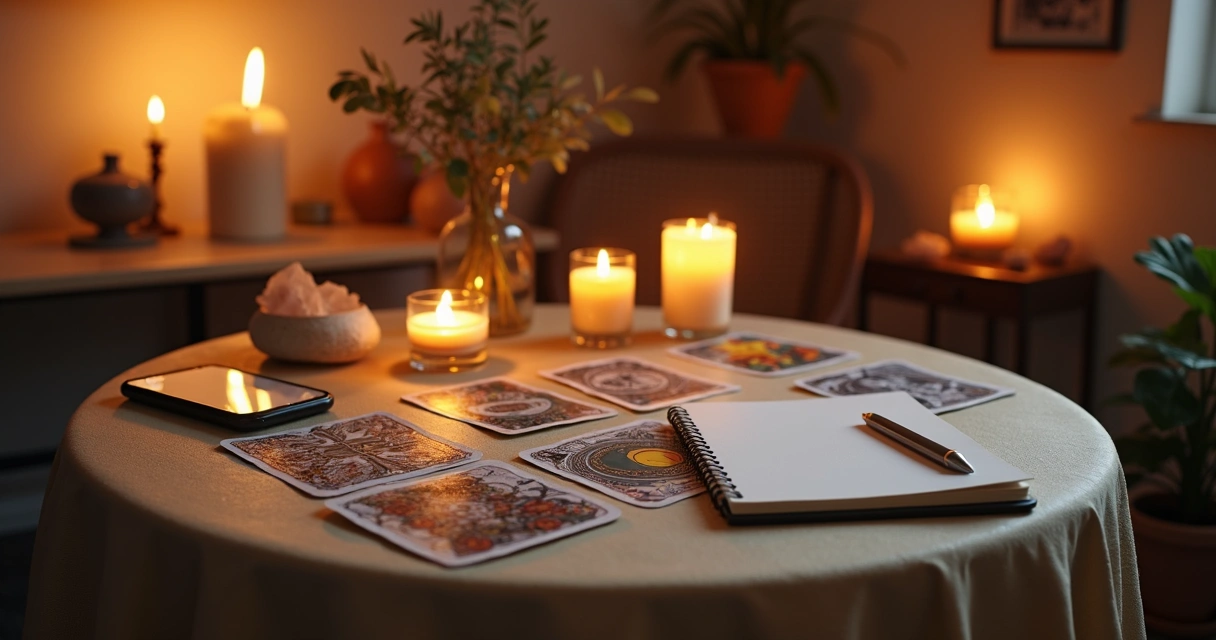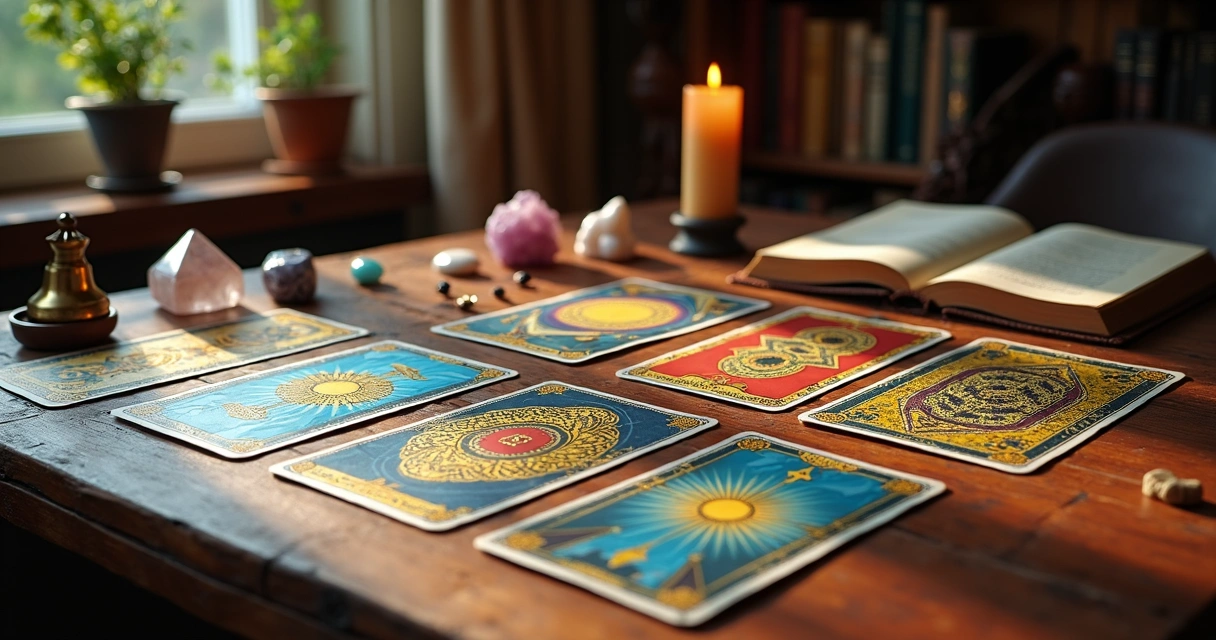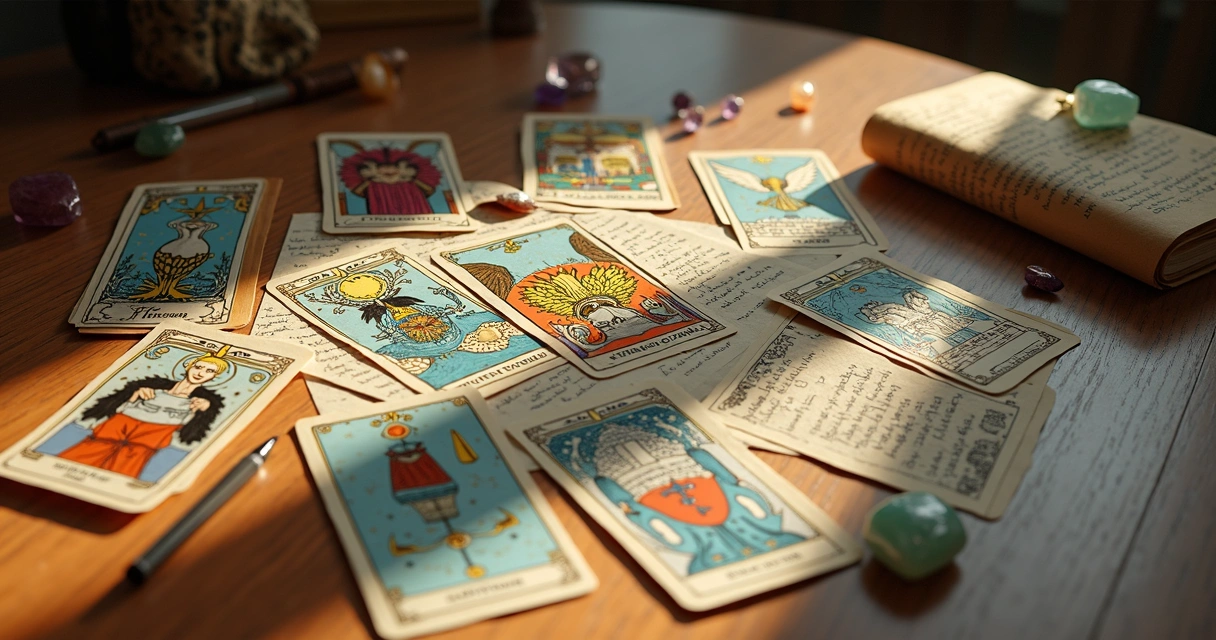Picking up your tarot cards, shuffling through the familiar shapes and colors, you might feel an odd combination of excitement and hesitation. Even after years, the sense of “What if I’m wrong?” can creep in. Confidence isn’t something you get handed with your first deck. It comes quietly, step by step, through small choices and reflections. It’s the result of practice, feedback, and a willingness to connect your mystical insights with other people’s real needs. This guide offers a set of practices for building strong, consistent confidence in your tarot readings while nurturing both personal creativity and professionalism.
Confidence grows through practice, feedback, and honest connection.
Whether you are a student or a professional, tools like MysticLog can help document, review, and refine every part of this process—putting insights and client notes at your fingertips, and helping you track progress along the way.
Why practice is the key first step
All the preparation in the world means very little without real-world practice. No matter how thoroughly you study the meanings of each card, or how much you may intuitively “feel” their story, transformation begins with practice. In fact, research and recommendations from professional tarot resources keep repeating the same thing: start reading for real people.
- Find your first group of volunteers. Social media can work surprisingly well. Post a short and honest invitation. “Looking for volunteers open to a free tarot reading session. I’m practicing new spreads!” Simple, clear, and inviting.
- Work with people you know (but not too well). Friends-of-friends or trusted contacts help reduce judgment or anxiety but also don’t know your whole life story. This helps keep the reading more objective.
- Keep sessions short in the beginning. Short readings (10-20 minutes) are enough. You get to practice, but without pressure to fill time.
As you do more, confidence sneaks in, shoelaces untied, not making a fuss.
 Seeking and using feedback wisely
Seeking and using feedback wisely
Confidence doesn’t only grow from inside. Sometimes it’s borrowed through the supportive words of others, and sometimes sharpened by questions you hadn’t thought about. After each reading, consider inviting feedback from your volunteers or clients.
- Send anonymous surveys after each session, perhaps via a simple online form. Ask them:
- What parts of the reading felt most helpful?
- What could have been clearer or different?
- Did you feel understood?
- Would you recommend a reading to a friend?
- Let feedback sit for a moment. Sometimes there will be patterns you hadn’t noticed. Over time, these comments make you more aware, and more assured.
According to some professional guides, regular reflection on feedback helps you spot your strengths (and blind spots), nurturing confidence by addressing one thing at a time.
Constructive feedback is a mirror—sometimes gentle, sometimes sharp, always honest.
Growing your reputation: the power of referrals
Word of mouth is one of the most organic ways to grow as a tarot reader. When someone leaves a session feeling seen and heard, they often want to share your services with others. But it never hurts to give a gentle nudge.
- Offer special referral deals. Try “Bring a friend, get a free mini reading” or “Refer two people, receive your next session at half price.” The terms can be flexible, but the logic is simple: make sharing rewarding for both of you.
- Keep track using a reliable log. A tool like MysticLog can help you remember who referred whom, and what offers are due.
- Gently remind clients at the end of their session. “If you found this reading helpful, feel free to recommend me. There’s a little treat in it if you do.”
Over time, this creates a snowball effect. It may start small, but the slow build is often more sustainable than trying to promote everywhere at once.
Making your tarot services clear and attractive
If someone lands on your social media page, in search of a tarot reading, what do they see? A scattered feed of cryptic imagery, or clear information about who you are and what you offer?
- Create clear profiles. Use a recent, friendly photo (or a professional illustration if you’re camera-shy). Write a description of what you do, in plain language—none of the “Esoteric Empathic Quantum Oracle” word salad unless you know your clients will love it.
- List your services and how to book. Whether you use DMs, a booking website, or email, make it obvious. Spell out: online, in-person, or both?
- Describe the kinds of readings you do. Love, career, general guidance, in-depth, single card pulls—paint the options, but keep the menu manageable. No one wants to scroll a mile.
According to marketing strategies for tarot readers, clear social proof—such as positive testimonials—makes your profile appealing and approachable.
Again, tools like MysticLog can help by summarizing client feedback so you can easily reference it, with your clients’ permission, to build authority.
 Connecting with your client: questions that open doors
Connecting with your client: questions that open doors
Every client brings a unique energy and set of experiences. Start strong by showing sincere curiosity, not scripted politeness.
- Begin with a warm welcome, a simple “How are you feeling today? Is there something on your mind?”
- Ask about their experience, like “Have you had a tarot reading before?” This lets them share fears or hesitations upfront.
- Invite honesty, even if they’re skeptical or uncertain. “It’s okay if you just want to try and see what happens.” Don’t force belief. Curiosity is enough.
These small questions foster an open dialogue. According to advice from spiritual practitioners, building trust this way allows intuition to flow more freely, since clients can relax into the process.
The best readings start with genuine interest, not assumptions.
Deciding your service packages and consultation formats
Too many options can overwhelm you and your client. Too few? You may miss the chance to meet different needs. Aim for a variety, but keep it simple—no more than five core offerings.
- Short, focused readings, such as 15-minute sessions for a quick check-in.
- Comprehensive readings of 30-60 minutes for deeper questions.
- Email or written readings, where you send a detailed write-up (great for shy clients).
- Group sessions or workshops for a shared experience.
- ‘Follow-up’ or reflection sessions a week or two later.
You may notice that your clients most often ask for two or three options. Let these become your specialties. Periodically, review demand and adjust. MysticLog can help you review all sessions and stay updated on trends.
Confirming appointments: payments and reminders
A service is a promise: you give your time, your attention, and your energy. But clients, like everyone, can forget or change plans. Confirm every appointment with a payment or deposit. This isn’t just about money—it’s mutual respect.
- Ask for a deposit (even symbolic) to secure the booking.
- Send reminders a day or two before the session. “Looking forward to our session tomorrow!” is both practical and warm.
- Be flexible if there’s a genuine emergency, but set reasonable boundaries.
Organization helps here. Automated reminders (through your tool of choice) can soften no-shows and encourage reliable partnerships.
 Setting the right mood for your tarot sessions
Setting the right mood for your tarot sessions
The energy in the room can shape the entire reading. Set a tone that lets both you and your client feel comfortable.
- Use gentle music or ambient sounds. Low-volume meditation tracks or nature sounds work wonders (headphones optional for online sessions).
- Begin with a minute of intentional breathing. Invite the client to join. “Shall we take a breath or two together before we start?”
- Have water, tissues, and a notebook nearby. Anything that makes people feel cared for.
These small details can help melt anxiety for both you and your client.
Notes, language, and building connection
Taking notes isn’t just for your memory—it shows the client you are attentive. Use their words when possible, mirroring language to create a sense of safety.
- Keep your notebook or a digital journal open. MysticLog, for example, lets you record key moments and client preferences.
- Notice emotional language, and reflect it back gently. If someone says “I feel stuck,” you might say, “Let’s see how these cards can illuminate why that stuckness keeps showing up.”
Feedback from seasoned tarot readers suggests this style deepens connection and strengthens trust.
Language creates bridges, not walls.
Ending the session and encouraging feedback
As the session comes to a close, structure helps everyone feel grounded.
- Summarize the reading. “To recap, these are the key messages from today’s session…” Give space for extra questions.
- Offer gentle direction. Suggest journaling prompts, recommended reading, or a practical exercise inspired by the cards.
- Invite feedback again. “If you have thoughts or feelings afterward, please let me know. Your input helps me grow.”
- With permission, collect testimonials. Social proof supports your professional credibility.
Most people value being asked for feedback—it feels like being part of something bigger. Your future clients will appreciate seeing positive experiences from others, which encourages them to trust your services.
The ripple effect: confidence, professionalism, and growth
By practicing regularly, seeking thoughtful feedback, structuring your offerings with clarity, and truly connecting with each client, you lay a strong foundation for both skill and business growth. These steps might feel awkward at first—growth always does—but over time, your confidence and creativity will become impossible to ignore.
MysticLog is here to help keep you organized, inspired, and aware of the subtle patterns that run through both your readings and your professional journey. Whatever stage you are at, these steps will guide you towards deeper satisfaction and lasting confidence in your tarot work.
Confidence isn’t a destination. It’s something you build, one reading at a time.
Ready to turn experience and intuition into a sustainable, rewarding journey? Learn more about how MysticLog can support every step—practice, reflection, and connection—no matter where you are on your tarot path. Your growth is just beginning.
Frequently asked questions
What is tarot reading confidence?
Tarot reading confidence is the inner sense of ease and self-trust you feel when interpreting cards for yourself or others. It’s less about being “right” every time, and more about feeling at home with your process—trusting your intuition and your learned skills. This kind of confidence grows as you practice, collect feedback, and recognize the positive impact your readings can have.
How can I improve my tarot skills?
Improving tarot skills means making study and practice a regular habit. Start by becoming familiar with card meanings, but also pay attention to your intuitive responses as you handle each card. Try to read for actual people—friends, volunteers, or clients—and reflect on each session, maybe by keeping a tarot journal. Seek feedback, learn from your mistakes, and gradually expand to more complex readings as you become more comfortable. Many practitioners, as shown by research on skill-building, find regular journaling and meditation helpful for deepening understanding.
What are common beginner tarot mistakes?
Beginners often worry too much about memorizing every keyword, sticking too closely to guidebooks, or second-guessing their own intuition. They might also overlook the client’s actual question, focusing more on “what the book says” rather than applying cards to real-life situations. Another mistake is not practicing enough with real readings, which is where true confidence builds. Sometimes, failing to reflect afterward or seek feedback can slow down progress. It's all part of the learning curve.
How often should I practice tarot reading?
Regular practice is better than occasional long sessions. Even 10–15 minutes a few times per week helps build familiarity with your deck and your style. If you can, aim for several short readings weekly, increasing frequency as your comfort grows. Consistency matters more than duration, as studies summarized by experienced tarot professionals suggest. If you’re actively reading for others, keep a practice journal to track growth and new insights.
Is it worth it to use tarot journals?
Absolutely—keeping a tarot journal supports learning, reflection, and growth. Journals let you track card spreads, personal insights, recurring themes, and progress over time. They also enable you to study which approaches work best for you or your clients. Many tarot experts, including those at The Mystic Stones, recommend regular journaling as a way to nurture both skill and confidence in tarot reading.




